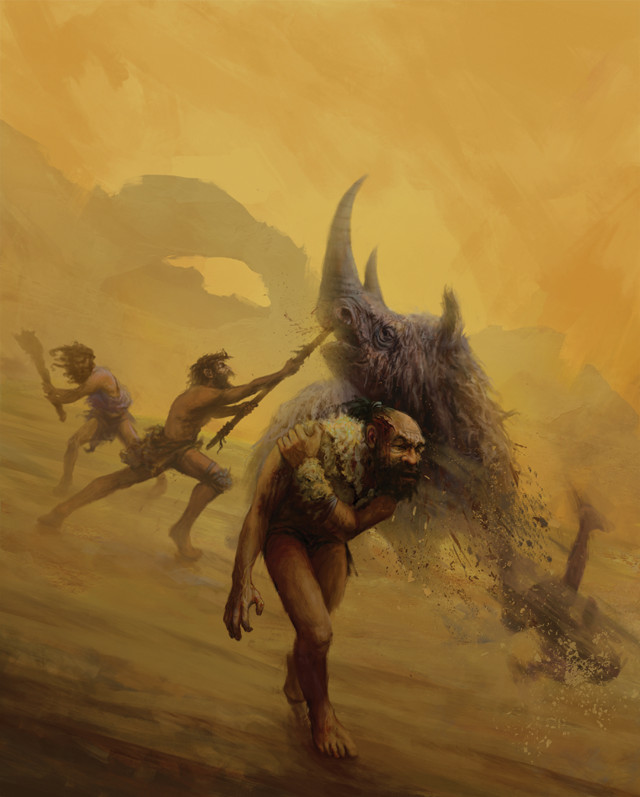
by Mary Caperton Morton Wednesday, February 13, 2019

Neanderthals are commonly thought to have relied on dangerous close-range hunting techniques, using nonprojectile weapons like the thrusting spears depicted here. Credit: Gleiver Prieto and Katerina Harvati.
Paleolithic Neanderthals have traditionally been depicted as more aggressive than Homo sapiens, and reliant on inferior hunting techniques with close-range weapons that would have put them at greater risk of suffering gruesome injuries and shortened life spans. A seemingly high incidence of Neanderthal remains bearing evidence of traumatic injuries has helped shape the narrative that they lived harder, more violent lives and died younger than their modern human neighbors. But a new study in Nature looking at skull injuries in Eurasian hominids casts doubt on this brutish stereotype.
Researchers used a broad, population-level analysis of head trauma among Middle to Upper Paleolithic Neanderthals and similarly aged modern humans in Western Eurasia, drawing upon a database of several hundred injured and healthy specimens from between 80,000 and 20,000 years ago. They found similar levels of head trauma among the groups, with males of both species more likely to be injured than females, a pattern seen throughout hominid history.
They also found that although traumatic injuries were seen across all ages, Neanderthals with head trauma were more likely to have died before age 30 than modern humans. The authors interpreted this as evidence that Neanderthals either suffered more injuries at younger ages or were more likely than humans to have died soon after being injured. “The age-related pattern is a novel finding,” said co-author Katerina Harvati of the University of Tübingen in Germany in a statement. “Overall, however, our results suggest that Neanderthal lifestyles were not more dangerous than those of … early modern Europeans.”
© 2008-2021. All rights reserved. Any copying, redistribution or retransmission of any of the contents of this service without the expressed written permission of the American Geosciences Institute is expressly prohibited. Click here for all copyright requests.